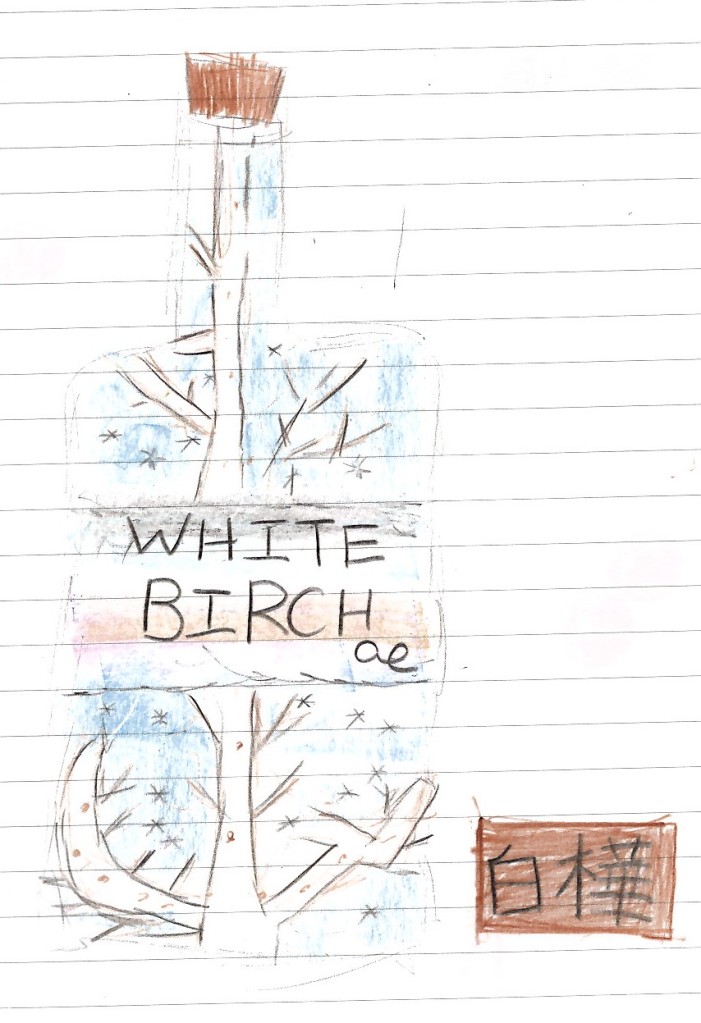This is the second installment in our multi-part series on tree-derived alcoholic beverages.

Professor Otsuka met with us in April of this year and took the time to explain the production process. He also showed us a video that illustrated it. Though not quite as complex as the the contraption that is featured above, it is far from simple. An abbreviated version might go something like this: logs cut, bark stripped, wood slurry created, enzymes and yeast added, saccharification and fermentation achieved, double distillation conducted, and bottling. Making the wood slurry is the key step. It is achieved through the use of a novel mill that employs small heavy beads to break down cell walls to expose cellulose to microorganisms. The cellulose can then be saccharified and fermented with enzymes and yeast. Please see here for more details on the process.
Naming is often very important for a product’s success. Sometimes name changes are the result of political developments and are done to ensure better marketing prospects. Such was the case when the name “Chinese gooseberry” became “kiwi” when the fruit was exported to the U.S. during the Cold War. New Zealand “growers started to export it in the years after World War II. Shipped overseas as the Chinese gooseberry, the fruit’s binomial was greeted in America with McCarthyist sneers. …At a brainstorm session, someone suggested the Maori word for New Zealand’s national bird: the kiwi.”1 Sometimes the name-change is meant to send a propagandistic message, no matter how absurd. Such was the case with “liberty cabbage” (a.k,a., “sauerkraut”) during World War I. We don’t know about you, but we don’t want our cabbage to be taking liberties! In the case of this new drink, the importance of adopting the proper name is crucial to attracting drinkers to the beverage. No, let us rephrase that: “these beverages.” One may be tempted to use “wood alcohol” to describe them, but that term in English is reserved for methanol. The term being used now is “wood liquor,” which is accurate and non-threatening, but lacks verve and fails to convey the spirit of these unique spirits. The word “wood” unfortunately is associated with “wooden,” which communicates stiffness and lack of emotions. And then there is the English expression “dead wood,” which refers to someone whose utility is nil and deserves to be discarded. A possible substitute might be “alcoholic drinks derived from trees,” but that is exceedingly verbose. A naming contest might yield a number of attractive possibilities. Should one be held, we would like to enter the following for consideration: “Forest Ferments,” “Sylvan Sips,” “Forestree Spirits,” and “Timber Treats.”
Whatever these beverages are eventually called, they represent a milestone in the history of alcohol consumption. From the days of that distant ancestor who encountered a piece of rotting fruit and, perhaps anticipating the lyrics of ABBAs [Sorry, can’t do that thing with the “B.”] “Take a Chance on Me,” picked it up and popped it into his mouth to his great satisfaction to the creation of light (lite) beer—no, no, no, scratch that one—to the adoption of barrel-aging in whisky production, mankind has been on an upward trajectory with respect to alcoholic beverages. Wood distillates and related products represent the next rung of the ladder.
In next week’s entry we will report on a private tasting of these unique beverages.
1Gollner, A. The Fruit Hunters: A Story of Nature, Adventure, Commerce and Obsession (New York: Scribner, 2008).
